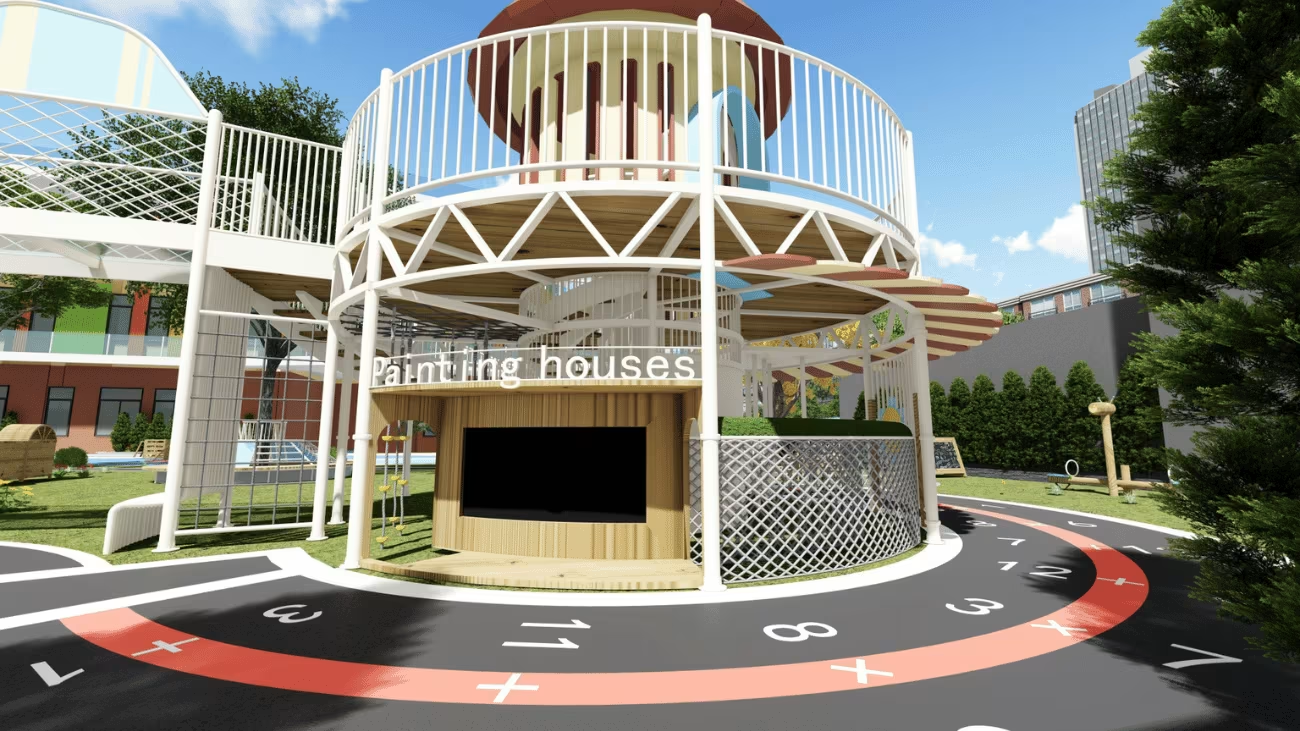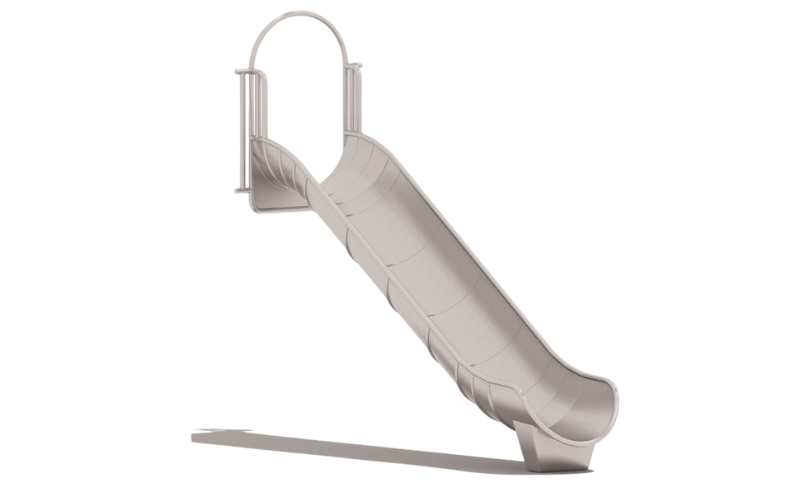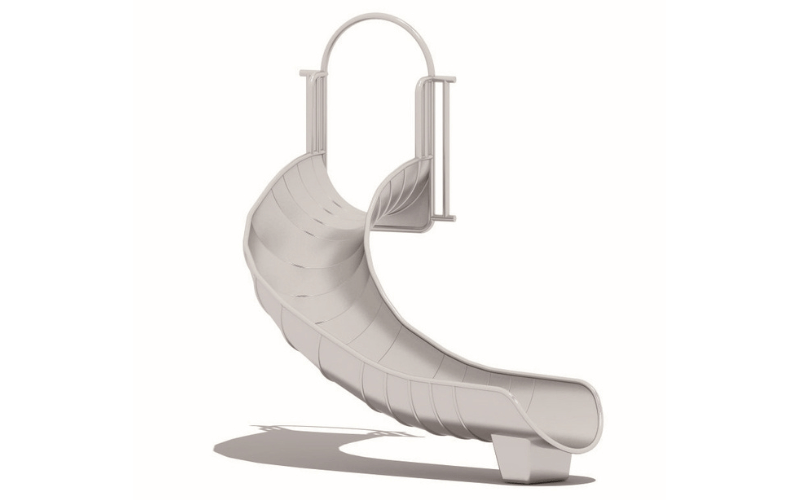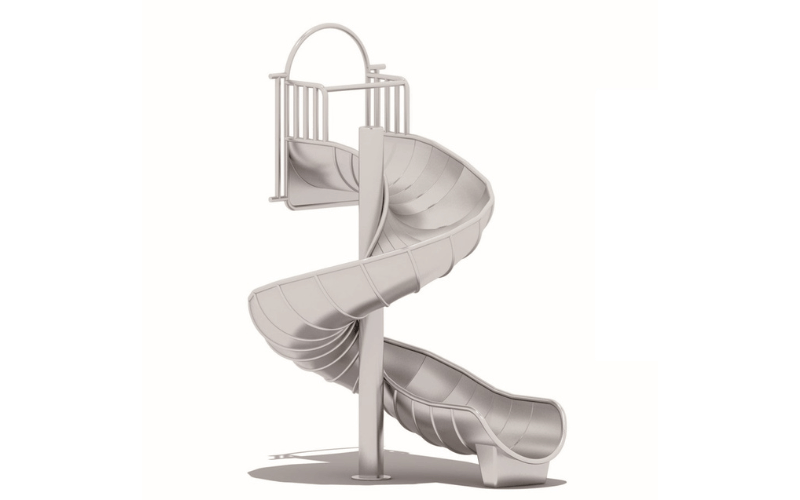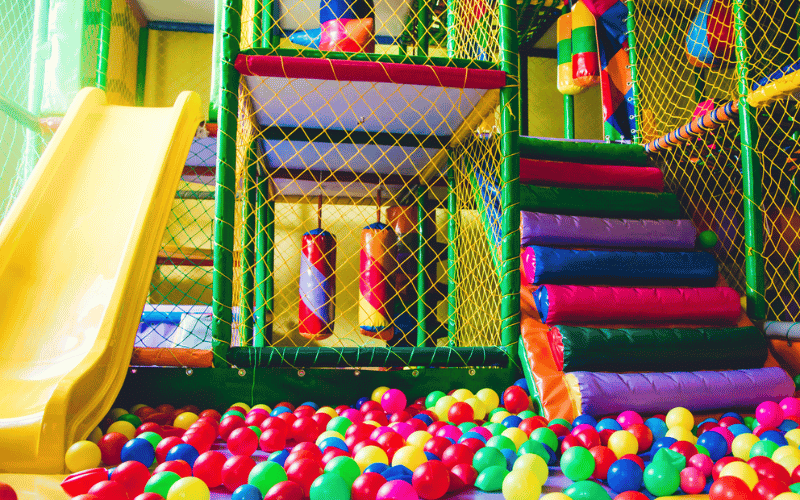The commercial indoor playground industry has experienced a surge in popularity, driven by a growing demand for creative, family-friendly spaces. Designers, investors, and operators who stay ahead of the curve can capitalize on this momentum, ensuring their projects remain relevant and profitable, and falling behind on trends risks losing market appeal.
This blog post delivers precisely what you need—practical insights into the top trends shaping the market in 2025. Whether you aim to boost your investment returns or craft engaging, innovative designs, you’ll gain clear, actionable guidance. Continue reading for a concise overview of the trends redefining indoor play spaces this year.
Table of Contents
ToggleTrend 1: Smart Playgrounds with Interactive Technology
The Rise of Interactive Features in Playgrounds
Playgrounds have evolved far beyond swings and slides, embracing cutting-edge technology to create immersive and engaging environments for children. Interactive features like motion sensors, LED walls, and AR/VR integration are transforming traditional play areas into dynamic spaces that stimulate both physical activity and cognitive development. Motion sensors, for instance, can trigger sound effects or light patterns when children move through specific zones, encouraging them to explore and interact with their surroundings. LED walls, on the other hand, can display vibrant visuals or educational games, making learning a seamless part of playtime. AR/VR integration takes this a step further by blending the physical and digital worlds, allowing children to embark on virtual adventures while remaining in a safe, controlled environment.
These advancements cater to the tech-savvy generation, offering experiences that align with their digital upbringing. By incorporating these features, playgrounds not only attract more visitors but also provide opportunities for children to develop problem-solving skills, creativity, and teamwork. For example, an AR-enabled scavenger hunt can teach kids about history or science while they actively engage in the game. Similarly, LED walls can host interactive math or spelling challenges, turning education into an exciting activity.
Enhancing Engagement and Learning Through Technology
Interactive technology in playgrounds does more than entertain—it fosters a deeper level of engagement and learning. Children are naturally curious, and features like motion-activated games or AR treasure hunts tap into this curiosity, encouraging them to explore and experiment. These activities often require collaboration, helping kids develop social skills and teamwork. For instance, a group of children might work together to solve a puzzle displayed on an LED wall, combining their strengths to achieve a common goal.
Moreover, these technologies can adapt to different age groups and skill levels, ensuring that every child finds something enjoyable and challenging. A VR experience might transport older kids to a virtual rainforest, where they can learn about biodiversity, while younger children can enjoy simpler, motion-activated games that teach basic concepts, such as colors or shapes. This adaptability makes smart playgrounds inclusive and versatile, catering to a wide range of interests and abilities.
Quick Tip: Integrating Smart Tech Affordably
Incorporating smart technology into playgrounds doesn’t have to be expensive. Start small by adding cost-effective features like motion-activated lights or sound modules, which can instantly make the space more interactive. Partnering with local tech companies or educational organizations can also help reduce costs while ensuring high-quality installations. Additionally, consider modular systems that allow for gradual upgrades, enabling you to expand the playground’s capabilities over time without a significant upfront investment.
Trend 2: Modular and Flexible Playground Designs
The Growing Demand for Adaptable Playground Layouts
Modern playgrounds are shifting towards modular and flexible designs to meet the needs of diverse audiences and events. Unlike traditional static setups, these adaptable layouts enable playgrounds to transform according to the age group, activity type, or even the season. For example, a modular playground can include interchangeable components like climbing walls, slides, or sensory panels that can be rearranged to create new experiences. This flexibility ensures that the space remains engaging and relevant for children of all ages, from toddlers to pre-teens, while also accommodating special events like community gatherings or school field trips.
The demand for such designs stems from the need to maximize the utility of public and private spaces. Parks, schools, and businesses recognize that a one-size-fits-all approach no longer works in today’s dynamic environment. By offering customizable layouts, playgrounds can cater to a broader audience, including children with varying abilities or interests. For instance, a sensory-friendly zone with tactile panels and quiet spaces can coexist with more active areas featuring climbing structures and obstacle courses. This adaptability not only enhances inclusivity but also ensures that the playground remains a hub of activity throughout the year.
Cost-Saving Benefits for Startups and Established Businesses
Modular playground designs offer significant cost-saving advantages, making them an attractive option for both startups and established businesses. For new ventures, the ability to start small and expand gradually reduces the initial investment. A modular system allows businesses to add new features over time, spreading out costs and minimizing financial risk. Established organizations, on the other hand, can use these designs to refresh their existing spaces without a complete overhaul. Swapping out a few components or reconfiguring the layout can give the playground a fresh look, attracting repeat visitors and boosting engagement.
Additionally, modular designs often use durable, standardized components that are easy to replace or repair. This reduces maintenance costs and extends the lifespan of the playground, providing long-term value. Businesses can also repurpose components for different events or themes, maximizing their return on investment. For example, a community center might use the same modular elements to create a pirate-themed playground for summer and a winter wonderland setup during the holidays. This versatility ensures that the playground remains a cost-effective and engaging asset.

Pro Tip: Future-Proofing Your Playground Design
To future-proof your playground, invest in modular systems that allow for easy upgrades and reconfigurations. Choose components made from durable, eco-friendly materials to ensure longevity and sustainability. Collaborate with designers who specialize in adaptable layouts to create a space that can evolve with changing trends and user needs. Additionally, consider incorporating multi-use elements, such as structures that serve both as climbing frames and seating areas, to maximize functionality.
Trend 3: Immersive Themed Environments
The Popularity of Themed Playgrounds
Themed playgrounds have captured the imagination of children and parents alike, transforming ordinary play areas into extraordinary adventures. Designs inspired by space exploration, jungle safaris, enchanted castles, or even underwater worlds create immersive environments that transport kids into a realm of fantasy and creativity. These playgrounds go beyond traditional equipment by incorporating storytelling elements, such as rocket-shaped slides, treehouse forts, or pirate ship climbing structures. Themed environments not only spark curiosity but also encourage imaginative play, allowing children to craft their own narratives as they explore.
This growing trend reflects a shift in how communities and businesses view playgrounds—not just as places for physical activity but as destinations that offer unique experiences. A space-themed playground, for instance, can feature interactive panels that teach kids about planets and constellations, blending education with entertainment. Similarly, a jungle-themed area might include animal sculptures, rope bridges, and sensory paths that mimic the textures of nature. These elements create a sense of wonder and excitement, making themed playgrounds a favorite among families.
How Themes Boost Engagement and Social Media Appeal
Themed playgrounds excel at capturing attention and driving engagement, both on-site and online. Children naturally gravitate toward visually striking and imaginative spaces, which keeps them engaged for longer periods. Parents, in turn, appreciate the opportunity to share these memorable experiences on social media. A well-designed themed playground often becomes a local landmark, drawing visitors who want to snap photos and share their adventures online. This organic promotion not only increases foot traffic but also builds a sense of community around the playground.
Moreover, themes encourage repeat visits by offering a distinct experience that stands out from generic play areas. Families are more likely to return to a playground that offers a unique setting, especially if it includes interactive or educational elements. For example, a castle-themed playground might host storytelling sessions or medieval-themed events, creating additional reasons for families to visit. By combining visual appeal with engaging activities, themed environments foster loyalty and word-of-mouth recommendations.

Quick Win: Choosing the Right Theme for Your Audience
To select a theme that resonates with your target audience, consider the interests and demographics of the community you serve. For example, a space-themed playground might appeal to tech-savvy families, while a nature-inspired design could attract eco-conscious parents. Conduct surveys or community polls to gather input and ensure the theme aligns with local preferences. Additionally, focus on timeless concepts that will remain relevant for years, such as fairy tales, wildlife, or exploration. This approach ensures your playground remains a beloved destination for generations.
Trend 4: Health, Safety, and Hygiene Innovations
Advancements in Playground Health and Safety
Playgrounds are embracing innovative solutions to prioritize health, safety, and hygiene, addressing the concerns of modern families. Antimicrobial materials, for instance, have become a game-changer in reducing the spread of germs on high-touch surfaces like handrails, slides, and climbing structures. These materials actively inhibit the growth of bacteria and viruses, ensuring a cleaner and safer play environment. Touchless check-ins and entry systems have also gained popularity, allowing parents to register their children or access facilities without physical contact. These systems not only enhance convenience but also minimize the risk of contamination.
Real-time monitoring technologies further elevate safety by providing instant updates on playground conditions. Sensors can detect overcrowding, equipment malfunctions, or even weather changes, alerting staff to take immediate action. For example, a playground equipped with temperature sensors can notify operators to close certain areas during extreme heat, protecting children from potential harm. These advancements demonstrate a commitment to creating spaces that prioritize both fun and well-being.
The Importance of Meeting Safety Standards
Meeting safety standards is crucial for building trust with families and communities. Parents want assurance that playgrounds provide a secure environment for their children, and adhering to recognized safety guidelines helps establish that confidence. Regular inspections, proper maintenance, and the use of certified materials ensure that equipment remains in top condition and free from hazards. For instance, impact-absorbing surfaces like rubber mats or engineered wood fiber reduce the risk of injuries from falls, a common concern in active play areas.
Beyond physical safety, addressing hygiene standards has become equally important. Playgrounds that implement visible cleaning protocols and use advanced materials signal their commitment to health-conscious practices. This transparency fosters trust and encourages families to return, knowing that their well-being is a priority. By consistently meeting and exceeding safety expectations, playgrounds can position themselves as reliable and responsible community assets.

Checklist: Key Safety Features Every Playground Should Have
To ensure a safe and hygienic playground, consider the following essential features:
- Impact-Absorbing Surfaces: Use materials like rubber tiles, poured-in-place rubber, or wood chips to cushion falls and reduce injury risks.
- Antimicrobial Coatings: Apply germ-resistant finishes to high-touch areas such as handrails, slides, and climbing equipment.
- Touchless Entry Systems: Implement contactless check-ins or gates to minimize physical interaction and enhance convenience.
- Real-Time Monitoring: Install sensors to track equipment usage, detect overcrowding, and monitor environmental conditions.
- Proper Spacing: Design play areas with adequate spacing between equipment to prevent collisions and overcrowding.
- Regular Maintenance: Schedule routine inspections to identify and address wear and tear or potential hazards promptly.
- Clear Signage: Display safety rules, age-appropriate guidelines, and emergency contact information prominently.
- Accessible Design: Include ramps, sensory panels, and inclusive equipment to accommodate children of all abilities.
- Shade Structures: Provide shaded areas to protect children from harmful UV rays and extreme heat.
- Hygiene Stations: Offer hand sanitizing stations or washing areas near the playground for easy access.
By incorporating these features, playgrounds can create a safe, welcoming, and hygienic environment that meets the expectations of today’s families.
Trend 5: Sustainability in Playground Design
The Shift Toward Eco-Friendly Materials and Energy-Efficient Designs
Playground design is undergoing a green revolution, with a growing emphasis on sustainability and environmental responsibility. Designers are increasingly using eco-friendly materials like recycled plastics, sustainably sourced wood, and repurposed rubber to construct play structures. These materials not only reduce waste but also minimize the environmental footprint of playgrounds. For example, recycled rubber from old tires can be transformed into impact-absorbing surfaces, while reclaimed wood adds a natural aesthetic to climbing frames and benches. Additionally, energy-efficient features like solar-powered lighting and kinetic energy systems are becoming more common, allowing playgrounds to operate sustainably while reducing utility costs.
This shift reflects a broader societal push toward greener practices, as communities and businesses recognize the importance of preserving natural resources. By incorporating sustainable elements, playgrounds can align with these values and contribute to a healthier planet. For instance, rainwater harvesting systems can irrigate surrounding greenery, while native plants in landscaping reduce water consumption and support local ecosystems. These thoughtful design choices not only benefit the environment but also create a more inviting and harmonious play space.
How Sustainability Appeals to Eco-Conscious Families
Modern families are increasingly prioritizing sustainability in their choices, from the products they buy to the places they visit. Playgrounds that embrace eco-friendly practices resonate with these values, making them more attractive to parents who want to instill environmental awareness in their children. A playground built with recycled materials or powered by renewable energy sends a clear message about the importance of sustainability, creating a positive impression on visitors.
Moreover, sustainable playgrounds often provide educational opportunities that engage children and parents alike. Interactive features like solar-powered displays or informational plaques about the materials used in construction can spark conversations about environmental stewardship. These elements not only enhance the play experience but also position the playground as a community leader in promoting green initiatives. Families are more likely to support and revisit spaces that align with their commitment to sustainability, fostering loyalty and advocacy.

Tip: Simple Ways to Make Your Playground Greener
You don’t need a massive budget to incorporate sustainability into your playground design. Start by choosing durable, recycled materials for equipment and surfaces, which reduce waste and extend the lifespan of your structures. Add greenery by planting native trees and shrubs, which require less water and maintenance while providing shade and improving air quality. Consider installing solar-powered lights to cut energy costs and reduce your carbon footprint. Finally, partner with local environmental organizations to host workshops or events that promote eco-friendly practices, turning your playground into a hub for sustainability education.
Trend 6: Globalization and Market Expansion
The International Growth of Indoor Playgrounds in Emerging Markets
Indoor playgrounds are experiencing rapid growth on a global scale, particularly in emerging markets where urbanization and rising disposable incomes are driving demand for family-friendly entertainment. Countries in Asia, the Middle East, and Latin America are witnessing a surge in indoor play centers as parents seek safe, climate-controlled environments for their children. These markets often face challenges like extreme weather or limited outdoor space, making indoor playgrounds an attractive solution. For example, cities like Dubai and Shanghai have embraced large-scale indoor play zones that combine entertainment with education, catering to the needs of modern families.
This international expansion reflects a shift in how communities view play spaces—not just as recreational areas but as essential components of urban development. Developers and businesses are recognizing the potential of indoor playgrounds to serve as community hubs, retail anchors, and even tourist attractions. By offering unique experiences, such as themed play zones or interactive learning modules, these playgrounds attract a diverse audience and generate significant foot traffic. This trend underscores the importance of tailoring designs to meet the specific needs and preferences of different regions.
Opportunities for Franchising and Cross-Cultural Design
The globalization of indoor playgrounds has opened up exciting opportunities for franchising and cross-cultural design. Established brands can expand their reach by entering new markets through franchise partnerships, leveraging local expertise to navigate cultural nuances and regulatory requirements. For instance, a successful indoor playground chain in Europe might collaborate with partners in Southeast Asia to adapt its concept for the local audience. This approach not only accelerates market entry but also ensures that the playground resonates with the community it serves.
Cross-cultural design plays a crucial role in this process, as it allows playgrounds to reflect the values, traditions, and aesthetics of their target markets. Incorporating local themes, materials, or play elements can create a sense of familiarity and pride among visitors. For example, a playground in India might feature designs inspired by traditional art forms or landmarks. At the same time, one in Brazil could incorporate vibrant colors and motifs that celebrate the country’s culture. These thoughtful touches enhance the playground’s appeal and foster a deeper connection with the community.
Advice: Adapting Designs for Global Appeal
To create playgrounds with global appeal, focus on flexibility and inclusivity. Start by researching the cultural preferences, climate, and demographics of your target market to ensure your design aligns with local needs. Incorporate universal play elements, such as climbing structures or sensory panels, that appeal to children across different cultures. At the same time, add region-specific features to create a unique identity for the playground. For example, consider using local materials or incorporating themes that reflect the area’s heritage.
Additionally, prioritize accessibility and safety to meet international standards and build trust with families. Collaborate with local designers or consultants to effectively navigate cultural nuances and regulatory requirements. Finally, consider offering modular designs that allow for easy customization, enabling you to adapt the playground for different markets without significant redesign costs. This approach ensures that your playground remains relevant and appealing, regardless of its location.
Key Trends to Watch and Implement
- Smart Playgrounds with Interactive Technology: Incorporate features like motion sensors, LED walls, and AR/VR to create engaging, educational play experiences. These technologies encourage exploration, teamwork, and creativity while appealing to tech-savvy families.
- Modular and Flexible Playground Designs: Opt for adaptable layouts that cater to diverse age groups, events, and activities. Modular systems allow for cost-effective upgrades and ensure the playground remains relevant and engaging over time.
- Immersive Themed Environments: Design playgrounds around popular themes like space, jungles, or castles to boost engagement, social media appeal, and repeat visits. Themes create memorable experiences and foster imaginative play.
- Health, Safety, and Hygiene Innovations: Use antimicrobial materials, touchless check-ins, and real-time monitoring to prioritize safety and hygiene. Meeting safety standards builds trust and ensures a secure environment for children.
- Sustainability in Playground Design: Embrace eco-friendly materials, energy-efficient systems, and green landscaping to align with the values of eco-conscious families. Sustainable designs reduce environmental impact and enhance community appeal.
- Globalization and Market Expansion: Explore opportunities in emerging markets by adapting designs to local cultures and preferences. Franchising and cross-cultural design can help businesses expand internationally while maintaining relevance.
Start Planning or Upgrading Today
Take the first step toward creating a modern, engaging playground by integrating these trends into your design or upgrade plans. Whether you’re building from scratch or refreshing an existing space, these innovations can help you attract more visitors, foster community connections, and stay ahead of the curve. Start planning today to create a playground that inspires, educates, and delights!
Conclusion
Staying ahead of playground design trends is essential to remain competitive and meet the evolving needs of modern families. By embracing innovation, sustainability, and adaptability, you can create spaces that captivate and inspire. Explore our services and resources to start designing future-ready playgrounds that stand out and make a lasting impact.

